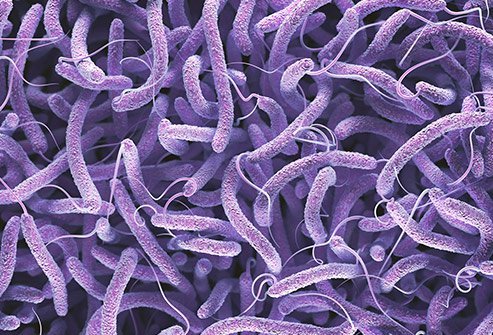A number of Vibrio cholerae bacterial strains can infect the small intestine and cause cholera. A person may experience none, mild, or severe symptoms. The hallmark sign is prolonged, copious watery diarrhea. Besides nausea, cramping can also happen. Significant electrolyte imbalance and severe dehydration can arise from prolonged, severe diarrhea. This may cause wrinkles on the hands and feet, chilly skin, diminished skin elasticity, and sunken eyes. The skin may become blue from dehydration. Two hours to five days following exposure, symptoms start to manifest.
There are several Vibrio cholerae strains that can cause cholera, some of which can cause the disease to be more severe than others. It is spread through tainted food and water that have been polluted by the germs found in human feces. The most frequent cause of this infection is raw seafood. The only animals impacted are humans. Poor hygiene, a very low access to safe drinking water, and poverty are risk factors for this disease. There are worries that the prevalence of disease will rise as sea levels rise. A stool test can be used to identify cholera. Although it is quick, a dipstick test is inaccurate.
Better sanitation and access to clean water are two cholera prevention strategies. For around six months, the oral cholera vaccine offers adequate protection. It also offers defense against other E. coli-related diarrheal diseases. Oral rehydration therapy, which replaces lost fluids with a somewhat sweet and salty solution, is the primary treatment. Solutions based on rice are preferred. Children benefit from taking zinc supplements. In severe situations, antibiotics may be helpful in addition to intravenous fluids like Ringer’s lactate. Determining the antibiotics that are susceptible to cholera will aid in choosing a course of action.
Worldwide, cholera is thought to infect 3-5 million people and kill 28,800–130,000 people annually. Despite being categorized as an epidemic since 2010, it is uncommon in high-income nations. Most impacted are children. In some regions, cholera is both chronic and epidemic. Africa and Southeast Asia are still at risk for disease. The likelihood of death among people infected is typically lower than 5%, but it can reach 50%. Higher death rates are a result of limited access to therapy. In Sanskrit writings from the fifth century BC, cholera was discussed. John Snow’s 1849–1854 investigation of the cholera outbreak in England led to a significant advance in epidemiology. In the past 200 years, there have been seven major epidemics with millions of deaths.
Cholera is primarily characterized by diarrhea and clear liquid vomiting. After ingesting the germs, these symptoms frequently appear suddenly one-half day to five days later. Frequently referred to as “rice water,” diarrhea can also smell fishy. Cholera patients who are left untreated can have 10 to 20 liters (3 to 5 US gal) of diarrhea every day. Without treatment, severe cholera claims the lives of nearly half of those infected. Untreated acute diarrhea can result in life-threatening electrolyte imbalance and dehydration. Between 3 and 100 is the estimated range for the ratio of asymptomatic to symptomatic infections. Since severe fluid loss can cause a person’s skin to become bluish-gray, cholera is also known as the “blue death.” That’s why nowadays we need more futuristic and modern lab supplier Malaysia.

